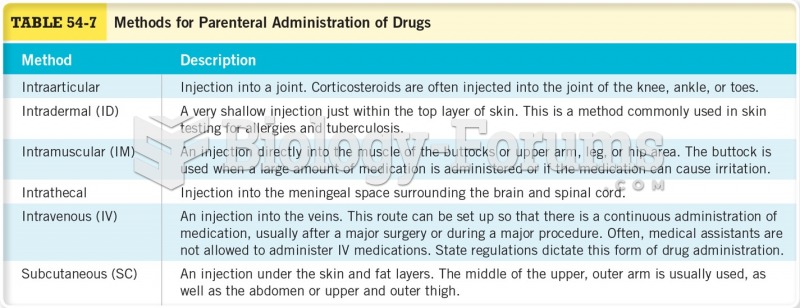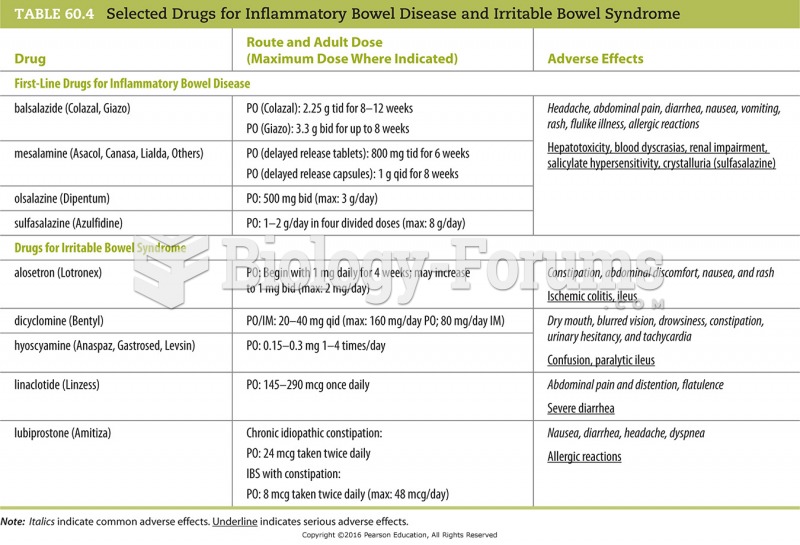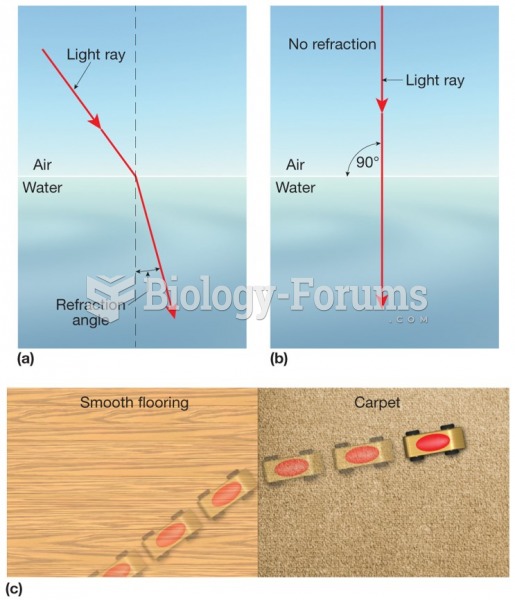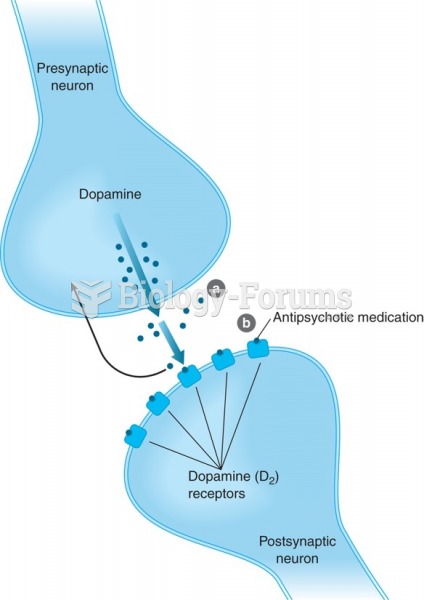Answer to Question 1
Correct Answer: 4
Rationale 1: Drugfood interactions can be just as serious as drugdrug interactions.
Rationale 2: Although most drugs do have some type of interaction, it is possible that a drug might not have any.
Rationale 3: Therapeutic drug interactions do not need to be avoided.
Rationale 4: The combination of some drugs can produce a synergistic or additive effect, which often are therapeutic in nature.
Global Rationale: The combination of some drugs can produce a synergistic or additive effect, which often are therapeutic in nature. Drugfood interactions can be just as serious as drugdrug interactions. Although most drugs do have some type of interaction, it is possible that a drug might not have any. Therapeutic drug interactions do not need to be avoided.
Answer to Question 2
Correct Answer: 1
Rationale 1: The drug inhibitor will interact with the antiviral drug and inhibit metabolism of it, resulting in accumulation of the drug with possible toxic effects.
Rationale 2: A change in viral-related symptoms could occur, since the level of antiviral drug is increased.
Rationale 3: An increase in side effects of the antiviral drug could occur, since more of the drug will remain in the bloodstream.
Rationale 4: Since the serum level of the antiviral drug will be elevated, the viral load might decrease, not increase.
Global Rationale: The drug inhibitor will interact with the antiviral drug and inhibit metabolism of it, resulting in accumulation of the drug with possible toxic effects. A change in viral-related symptoms could occur, since the level of antiviral drug is increased. An increase in side effects of the antiviral drug could occur, since more of the drug will remain in the bloodstream. Since the serum level of the antiviral drug will be elevated, the viral load might decrease, not increase.







